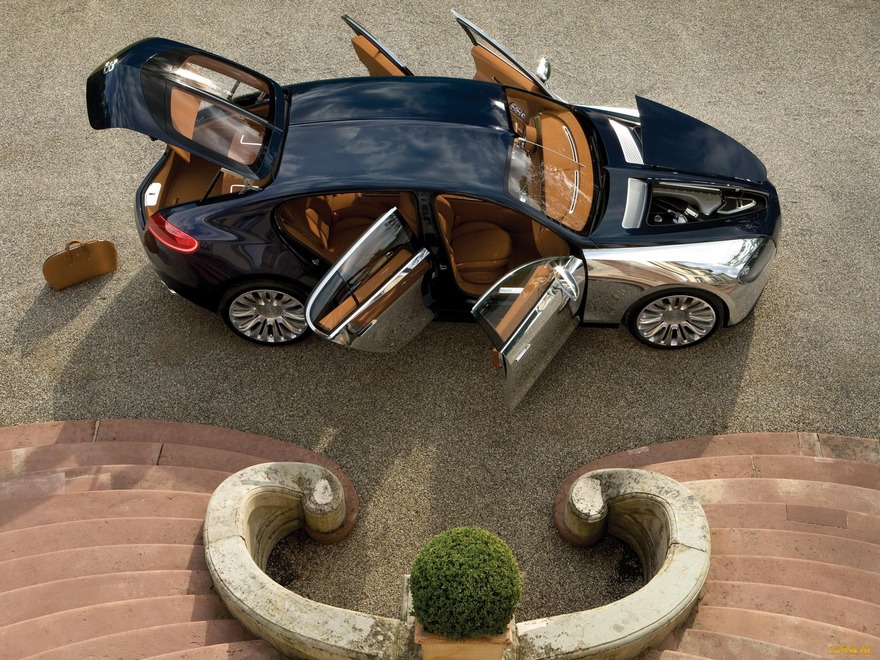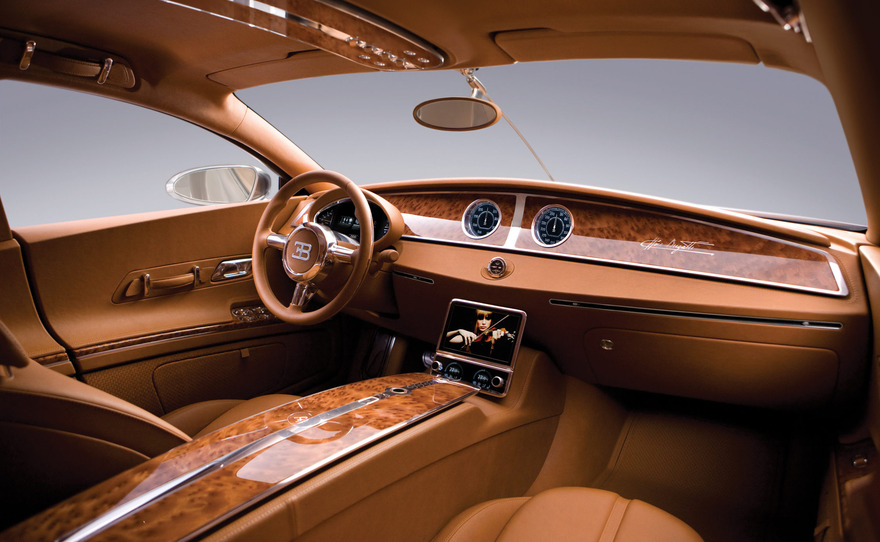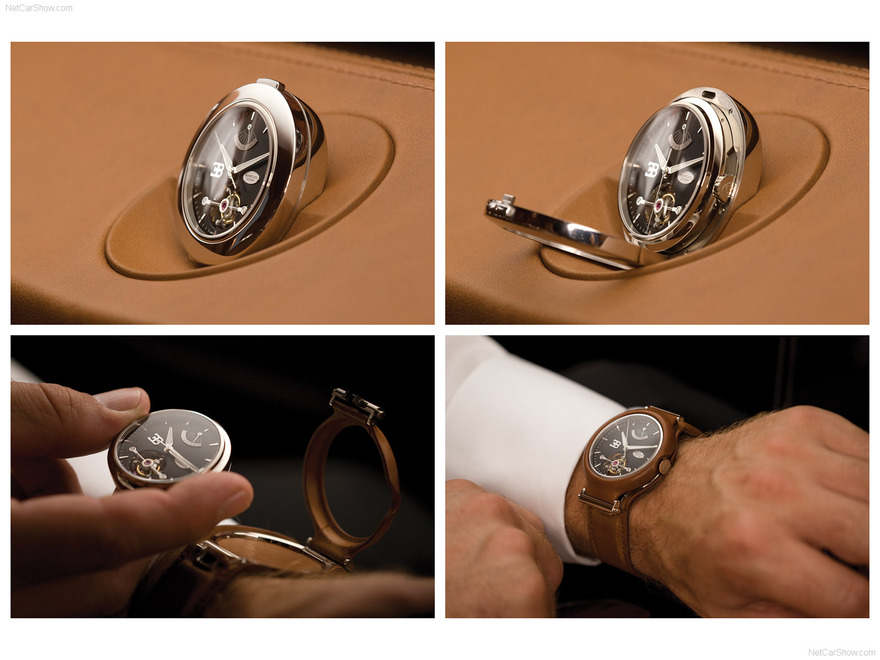In September 2009 it was revealed to the journalists behind the closed doors and in March 2010 16C Galibier — the new model by Bugatti — had its debut at the famous Geneva Motor Show. This four-door super sedan was designed to become the fastest and most expensive car in the world — with a top speed of 350 km/h and a price tag around €1,500,000.
The 16C Galibier concept is equipped with a deforced eight-litre W16 engine from supercar Veyron, with mechanically-driven superchargers replacing four turbochargers. Engine displacement — 7993 cc, power — 800 hp instead of 1001 hp. The 16C Galibier accelerates up to 100 km/h in 3 seconds.
The manufacturers of Bugatti tuned into the worldwide ecological beat and did not leave the questions of lower fuel consumption rate and emission level unattended. That is why the upgraded engine of the super hybrid can be powered both by regular petrol and bioethanol. City fuel consumption rate is 40 litres per 100 km. The advanced hybrid powerplant provides a possibility to charge batteries using the power outlet. The owner of this car could have covered the distance of several kilometres using electric power only.
The car is fitted with carbon ceramics brakes, eight-speed automatic transmission and all-wheel drive. That’s it for the technical data available.
Exterior body parts of the car are made of carbon fibre, its wings and doors are made of aluminium. The most eye-catching detail in its rear part is a range of eight chrome exhaust tailpipes.
Luxurious interior is finished in Art Deco style — a combination of simple and smooth lines with sophisticated and expensive materials. The upper part of the dashboard is decorated with Karelian birch while the lower part is trimmed with high-quality caramel-coloured leather. The interior also features chrome details.
Free access to the rear seats is provided, kneeroom for the back-seat passengers is increased and there is more free space above the head. Improved ergonomics of all seats — they are now more rigid in a sports way and have an advanced lateral support.
A wide range of multimedia solutions is implemented. An LCD screen is mounted in the central part of the dashboard and can be transferred to the back-seat passengers or taken out of the car.
Hand-made self-winding watch with tourbillion, designed by the Swiss company Parmigiani Fleurier, will lay emphasis upon the style and status of the owner of the luxurious supercar. The watch can be taken out of the central panel, put into a specially designed watchcase with straps and worn on the wrist. Perhaps it was done so that the owner does not get separated from his car or even a small part of it for a single second.
The production of Bugatti 16C Galibier was supposed to be limited to only 150 units. Several times the project was paused and resumed — in the spring of 2011 Volkswagen supported the idea to launch the production of a super sedan but later in September of the same year all developments were ceased with the project set to be fully reworked. A year later Bugatti resumed its work on the most beautiful (in company’s opinion) sedan in the world.
Everything looked great until the moment Wolfgang Schreiber, Bugatti president, said in his interview with Top Gear: «We have talked many, many times about the Galibier, but this car will not come because it would confuse our customers. With the Veyron, we placed Bugatti on top of all super-sportscar brands in the whole world. Everyone knows that Bugatti is the ultimate super sportscar. It's easier for current owners, and others who are interested, to understand if we do something similar to the Veyron. There will not be a four-door Bugatti.»
Bugatti fully abandoned the idea of development and manufacturing of the super sedan in the end of 2013.
INTERESTING TO KNOW:
In spite of its high price tag, 55 people among the owners of vintage Bugatti models showed their willingness to purchase a Galibier during one day of celebrating the 100th anniversary of the brand.
The car was named after one of the mountain passes in the Alps — Col du Galibier. Bugatti already had a car with a similar name — 1939 Bugatti Type 57C Galibier Saloon. Only 27 of them rolled off the production line.













